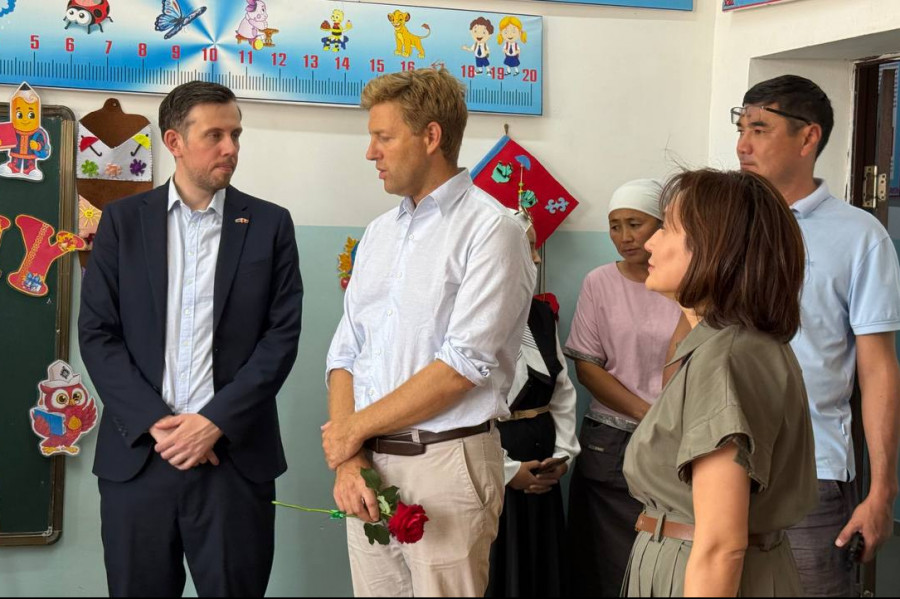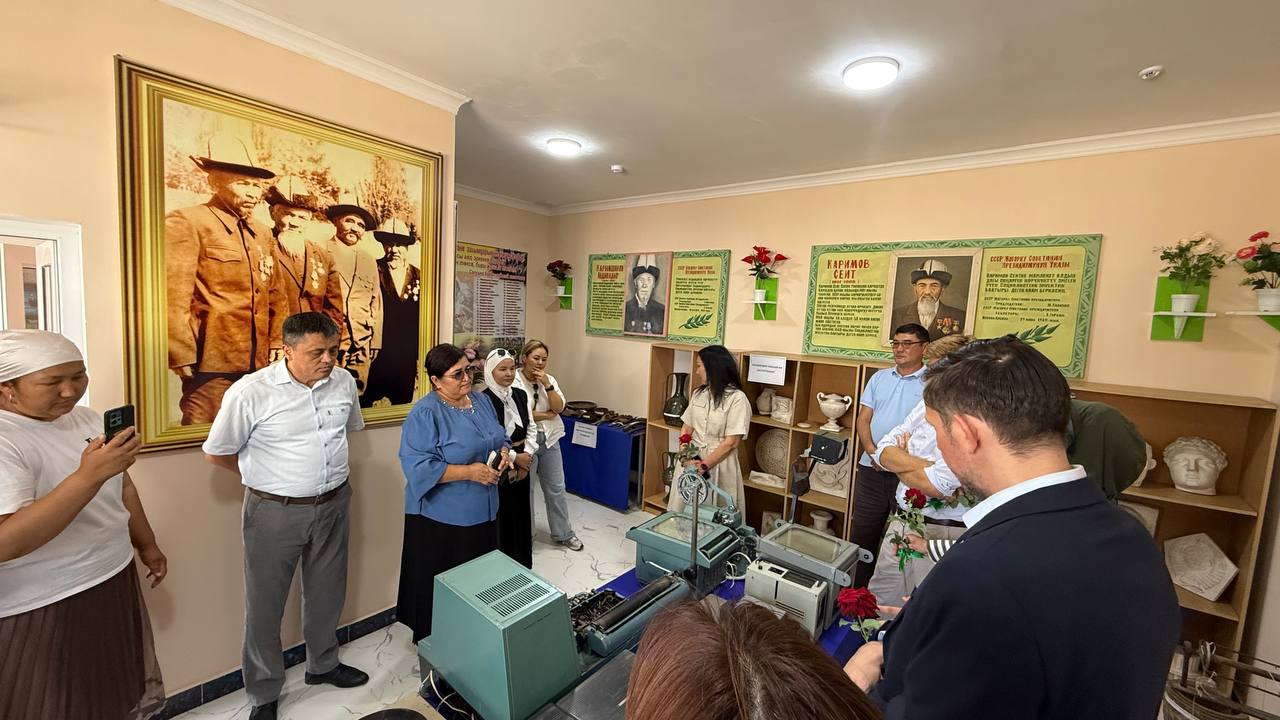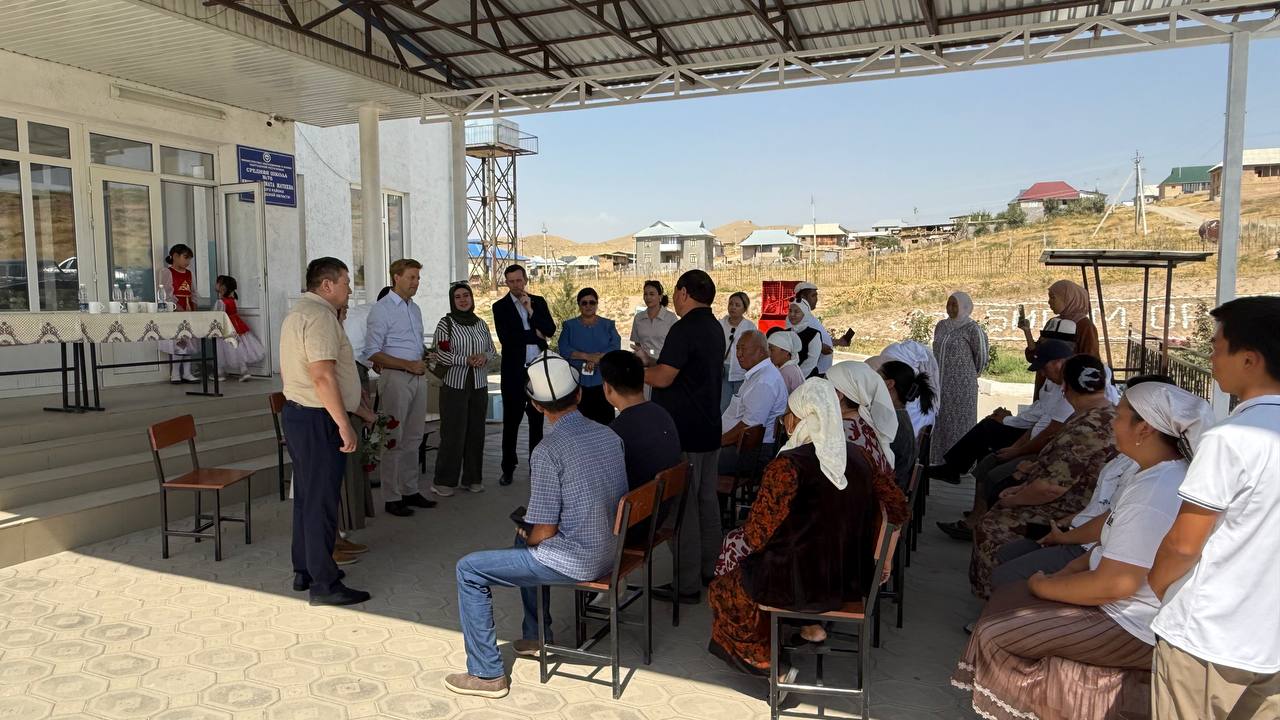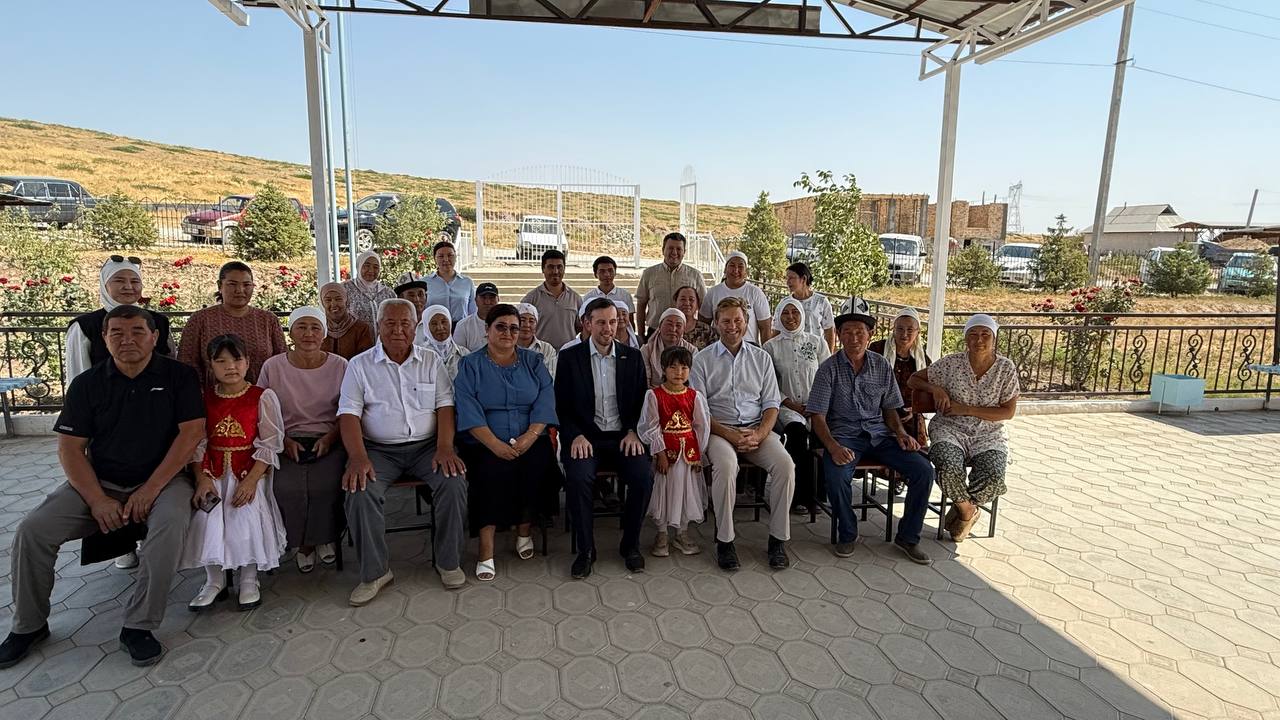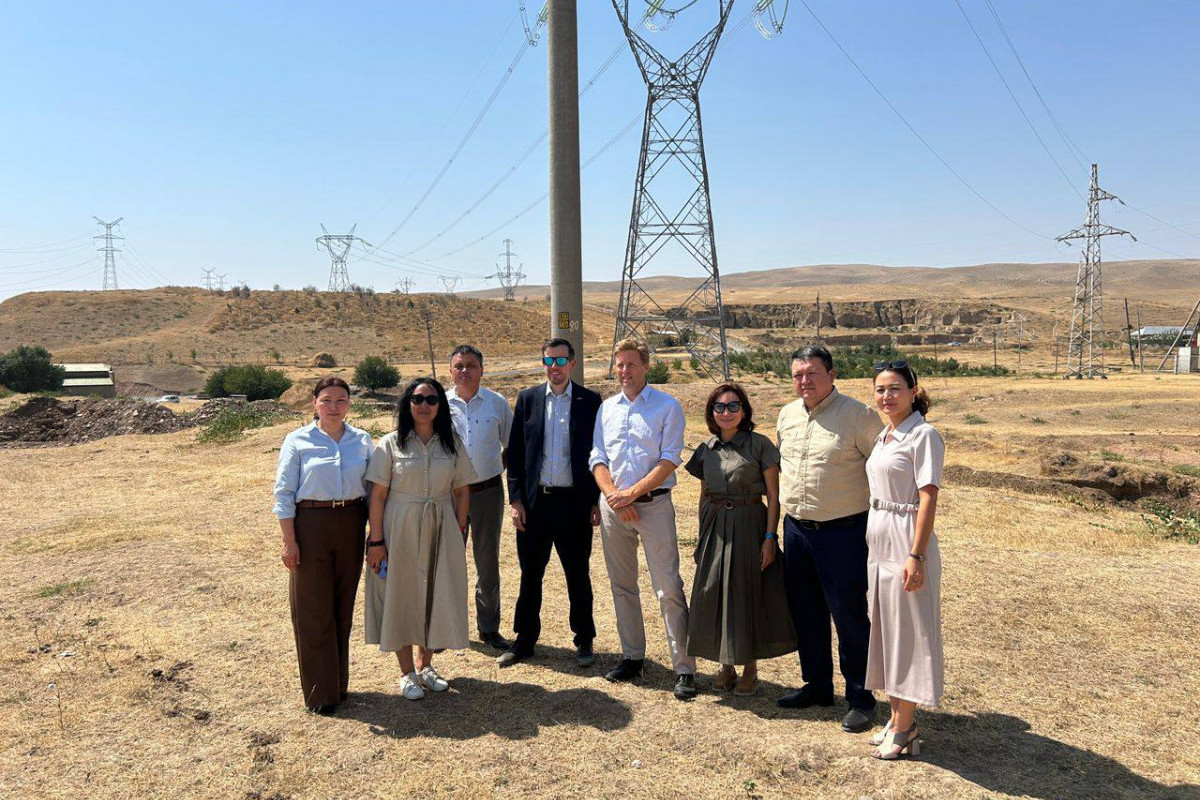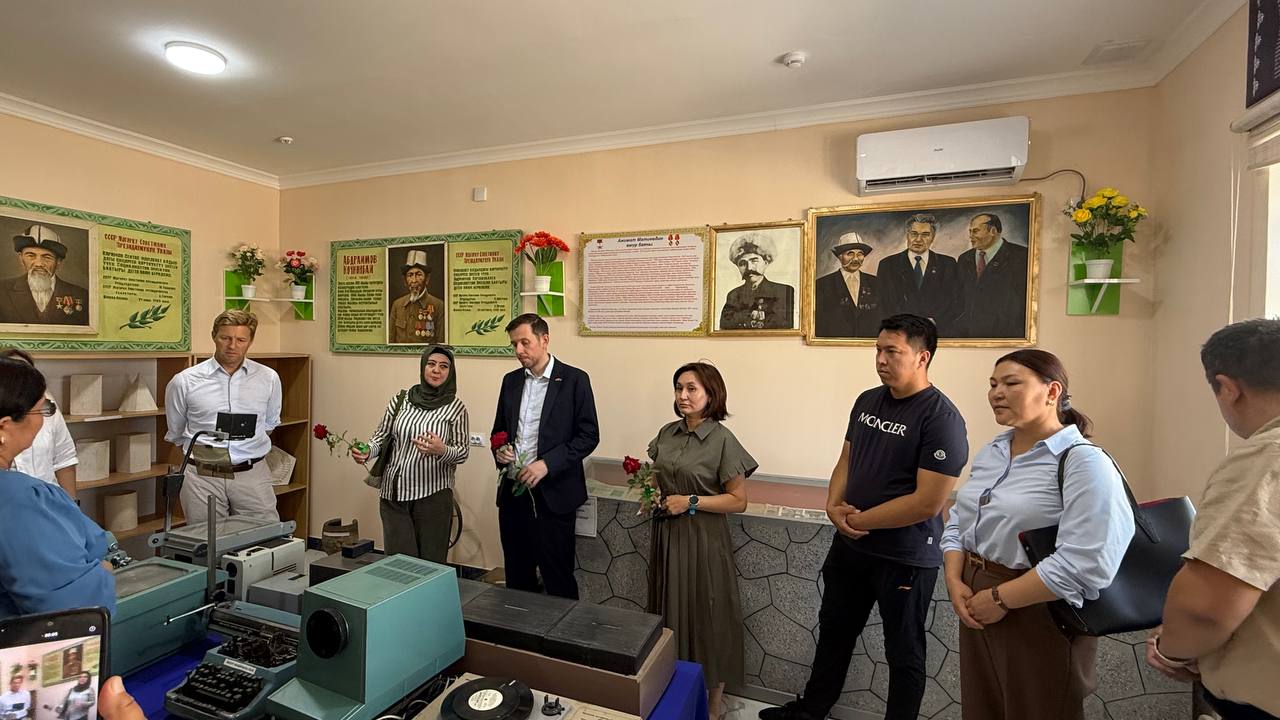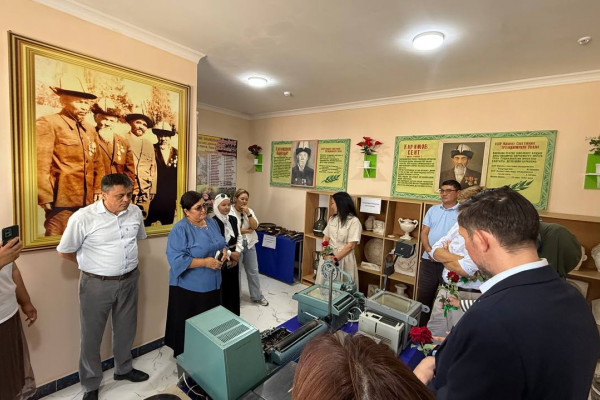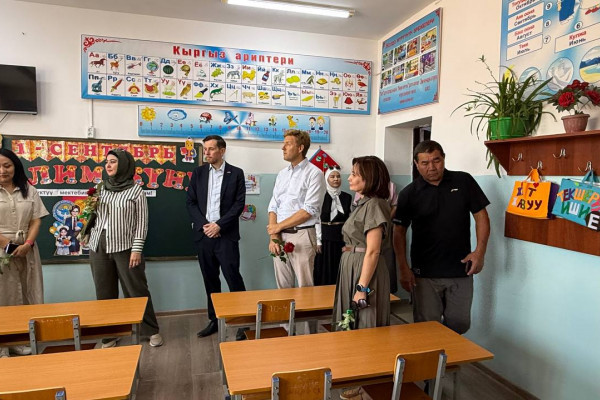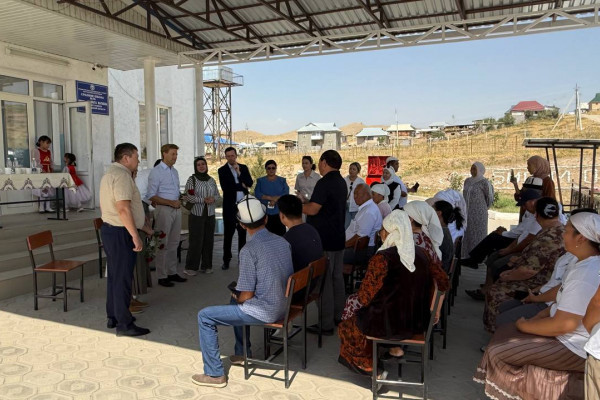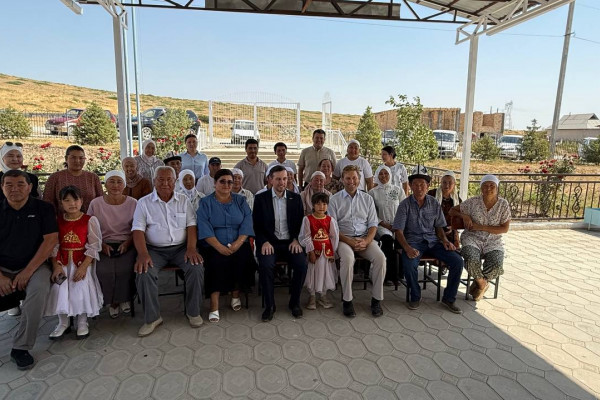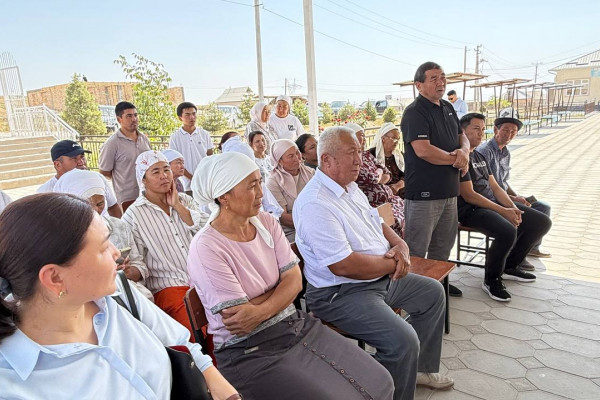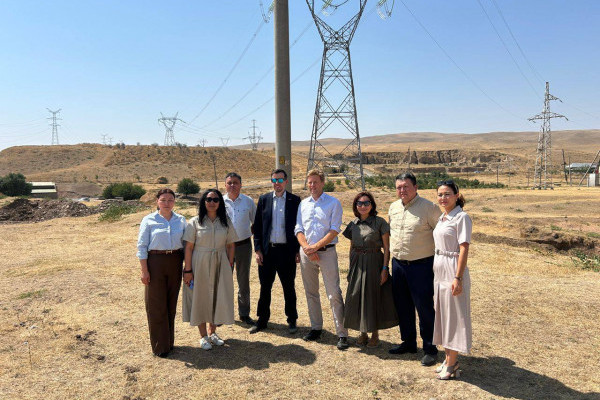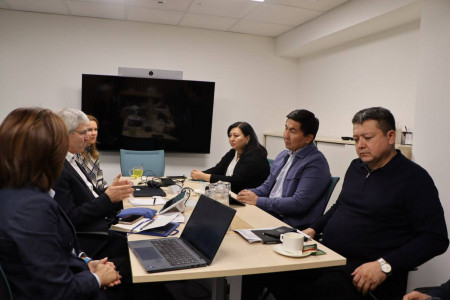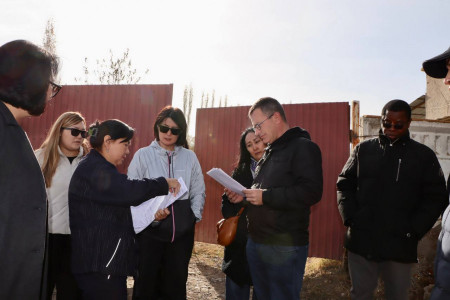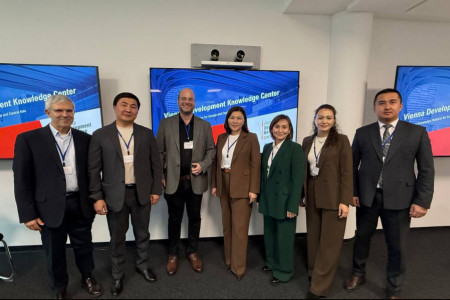Посол Великобритании в КР Николас Боулер и глава представительства Всемирного банка в КР Хью Риделл посетили Джалал-Абадскую область
Сегодня, 30 августа, в рабочей поездке Чрезвычайного и Полномочного Посла Великобритании в Кыргызской Республике Николаса Боулера, главу представительства Всемирного банка в Кыргызской Республике Хью Риделла сопровождали координатор Национального проекта по инициативе сообществ Майрамбек Баялиев и специалисты проектной команды. Главной целью визита стало ознакомление с ключевыми достижениями проектов развития по инициативе сообществ (РИС-проектов).
На встрече представителями ОМСУ, посланниками по изменению климата, активистами села были подчеркнуты: значение социальной мобилизации для широкого вовлечения сообществ в процесс реализации проектов Кабинета Министров КР; усиление потенциала ОМСУ и укрепление их взаимодействия с жителями в вопросах управления инвестициями на местах; развитие локальной экономики; создание новых рабочих мест, повышение дохода уязвимых слоев населения; обеспечение социальной вовлеченности женщин и молодежи; применение климатически устойчивых технологий.
Так, в селе Кок-Булак -1 Сузакского района Джалал-Абадской области, в рамках Проекта поддержки местных сообществ CASA -1000 (ППМС) был реализован подпроект «Реконструкция классных помещений в школе им. Матиева и строительство библиотеки и музея». Его успешное завершение явилось значимым вкладом в комплексное развитие социальной инфраструктуры Кызыл-Тууйского айылного аймака и стало примером эффективного сотрудничества сообщества, органов местного самоуправления Джалал-Абадской области.
Общая численность населения Кызыл-Тууйского айылного аймака Сузакского района составляет более 32 500 человек. Школа, рассчитанная на 300 учащихся и построенная в 2018 году, была переполнена. Теперь же в этом учебном заведении созданы современные, комфортные и безопасные условия, увеличено количество учебных классов. Строительство отдельного здания для музея и библиотеки обеспечило сохранение историко-культурного наследия региона и расширило доступ школьников к образовательным и культурным ресурсам.
